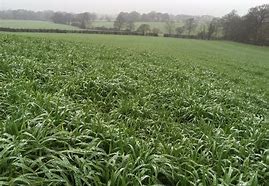The decision of the Upper Tribunal (Lands Chamber) in Senova Limited v Sykes (VO) (2019) UK UT 0275 (LC) deals with the question of agricultural exemption from non-domestic rates. Agricultural land and agricultural buildings have been exempt from non-domestic rates since the 1920s, with various detailed changes to the exemption being made over the years. For buildings to be exempt as “agricultural buildings”, it is necessary for the buildings concerned to be occupied with agricultural land, and to be used solely in connection with agricultural operations on that land or on other land.
The appellant owned offices, a warehouse, some open land and a paddock near Cambridge, and conducted a business as a plant breeder, developing seeds for sale to farmers. Part of the offices and the warehouse were occupied by the appellant company. The remaining part of the offices was occupied by an associated company, and the paddock was used for grazing horses, by the occupier of a nearby dwelling. The appellant argued that the part of the offices of the warehouse that it used should be exempt as agricultural buildings because they were used either with the paddock, which was agricultural land, or with numerous seed trialling and multiplication plots in various parts through the country. The Valuation Tribunal for England dismissed the appeal, and the ratepayer appealed to the Upper Tribunal.
Before the Upper Tribunal, the ratepayer argued that the building should be treated as exempt because they were occupied either with the paddock, or with the various seed trialling and multiplication plots used by the ratepayer throughout the country. The respondent Valuation Officer accepted that the paddock was agricultural land, as were the trialling and multiplication plots, but did not accept that either the paddock or the plots were occupied by the ratepayer, nor were they used by the appellant for agricultural operations.
The Upper Tribunal found that there was no evidence to show that the ratepayer was in occupation of the paddock. It was used by another party for grazing horses and the ratepayer exercised no control over that use. In respect of the trial and multiplication plots throughout the country, the contractual arrangements relating to the operation of these were such that there was no actual occupation of those plots by the appellant. Furthermore, any agricultural operations carried out on these plots were carried out by the farmers who owned the plots and, because of this, it could not be said that the appellant’s buildings were used in connection with agricultural operations on the plots concerned. Accordingly, neither the trialling plots nor the multiplication plots were occupied by the appellant, which meant that the buildings could not be said to be “occupied with” any agricultural land. The ratepayer’s appeal was dismissed by the Upper Tribunal.
The Upper Tribunal’s decision also contains important comments regarding evidence presented on behalf of the ratepayer. The Tribunal declined to admit that evidence, because of the existence of a conditional fee arrangement between the appellant and the witness concerned. It was suggested on behalf of the ratepayer that the evidence was evidence of fact and, therefore, should not be excluded because of the existence of a conditional fee arrangement. However, the Tribunal noted that, even if the evidence were evidence of fact, it had to be excluded because the conditional fee arrangement should have been notified to the Tribunal, and to the other party, at the outset of proceedings, rather than at the last minute and under protest. The Tribunal also indicated that it considered the evidence concerned to be expert evidence, rather than simply evidence of fact, and, on that basis, not to be admissible at all where a conditional fee arrangement existed.
The decision of the Tribunal in respect of the question of agricultural exemption represents an orthodox, and straightforward, application of the law, once the question of occupation of the trialling and multiplication plots had been determined. In this sense, the decision raises no new matters for practitioners to be aware of. However, the findings in respect of the evidence presented on behalf of the appellant, and excluded by the Tribunal, are important ones for practitioners, and show that the Upper Tribunal places great importance on the impartiality and independence of expert witnesses, as set out in its decision in Merlin Entertainments Group Limited v Cox (VO) which we have commented on elsewhere in these news pages.

